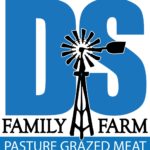Worried about what you are "really" eating? Have peace of mind with pasture grazed meats.
Bionutrient Soil Results
We have previously written about the importance of healthy soils to grow healthy grass to raise healthy animals. You have probably heard it said, you are what you eat. We feel that you need to find out what your food ate! Vegetables and fruit grown in healthy soils will be nutritionally superior. Animals raised on healthy pastures will taste better and be nutritionally superior. We believe YOU ARE what your food ATE!
In our participation with the “Defining Nutrient Density BEEF” project, we previously posted the forage test results, an estimate of what our beef was consuming before harvest. The photo below shows an example of the pastures being grazed prior to beef harvest in August 2022.

Soil Mapping by Vegetation and Landscape Position
During Doug’s employment with the USDA Natural Resources Conservation Service, he learned from Soil Scientists how soil maps are created. Soil Scientists utilize the topography of the land and vegetation to distinguish different soils. Soils develop differently primarily based on vegetation and gravity, or erosional forces. The Web Soil Survey is a great tool to find soil maps for your home or farm.
For The Bionutrient Institute’s “Defining Nutrient Density BEEF” project, we collected a “composite” soil sample across the pasture where the beef grazed before harvest. A “composite” soil sample is created by taking multiple “soil cores” zero to 6 inches deep and mixing them together. Looking again at the photo above, we collected “soil cores” in the upland, in the draw, and under the trees. These were all areas where the cattle were grazing the different forages that were growing. The soils on the uplands will have different levels of nutrients and organic matter compared to the soil in the draw or under the trees. By mixing the soil cores, we end up with average test results for the soils in our pasture.

Soil Test Results Summary
Doug was a little surprised with Percent Organic Matter. Test results = 4% soil organic matter, this is higher than what Doug was expecting. Considering that the hills being grazed this time of year are native grasses seeded back to old cropland. Before seeding the grasses, these hills were farmed for almost 100 years. Through the years, much of the topsoil was eroded and degraded. Typically the hill soils will have around 3% or less organic matter. Considering that we mixed in some bottomland soils, 4% soil organic matter does seem to make sense. Historically, we believe the soils under the Tall Grass Prairie in this area of the country would have had soil organic matter as high as 8%. We do have room to improve. Hopefully, our management will continue to restore and regenerate our soils to a healthier state.
Soil Organic Matter is used to calculate the “Estimated Nitrogen Release #N/Acre” value of 90 lbs. Nitrogen. This is plenty of nitrogen to grow 3,000 – 4,000 lbs. of warm season forages per acre (average for this area of Nebraska). We never apply synthetic fertilizers to the pastures. Nature is providing adequate Nitrogen. It just makes us stop and think, what is the potential forage production if our soils were restored to those much higher levels of organic matter around 8%?
As for the other nutrients/minerals listed on the report, we are just happy to see that they are all listed to some level. It is the biology in the soil that unlocks the available nutrients for plant use. As long as the minerals are there, it is our job to manage for active soil biology to release the minerals to the plants. Healthy soils = Healthy plants = healthy happy animals.





Pingback: Bionutrient Forage Results - DS Family Farm